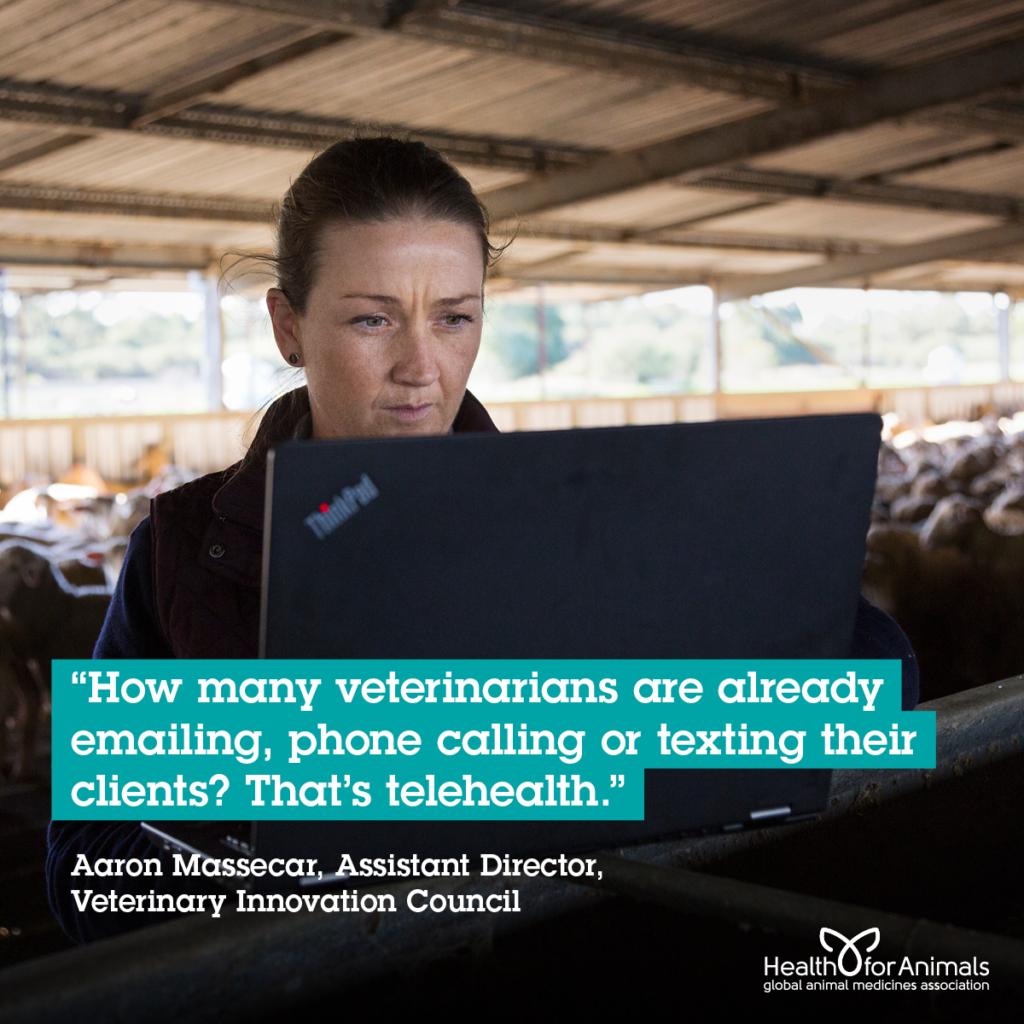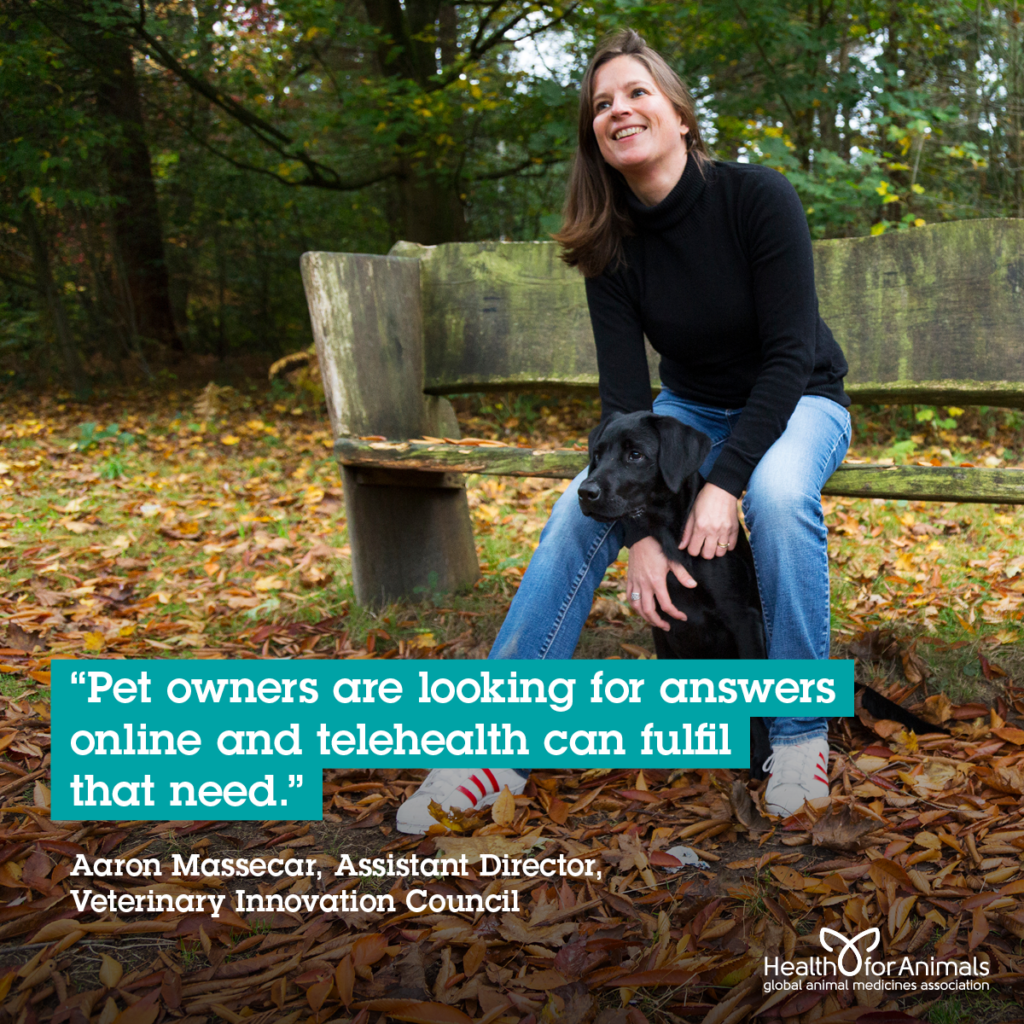Articles: Tackling telehealth for better health
When we have a question, we tend to go online – even when it comes to our pet’s health.
According to Aaron Massecar, Executive Director of the Veterinary Innovation Council, estimates show veterinary telemedicine has reached similar market penetration to human telemedicine, at two to five percent. And that’s not counting the huge number of online searches or veterinarian- client interactions taking place over Facebook or through text message which are going unrecorded.

Aaron Massecar, joins us this month to discuss industry concerns about digital veterinary services and highlights the opportunities telehealth for pets is presenting to clinics.
What actually is telemedicine?
One of the biggest problems for telemedicine has just been the term ‘telemedicine’ itself. It doesn’t really mean anything. But there have been attempts to explain it and it’s being broken down as; ‘telemedicine’ is the term used for diagnosing and prescribing; and ‘telehealth’ is the term for any sort of communication about the healthcare of your animal through electronic means.
It also immediately calls to mind a polarization. One person looks at the opportunities it presents and the other person says, “I could never diagnose a complex case through telemedicine so telemedicine is bad.”
But many teams don’t realize that they’ve already engaging in telemedicine. How many people are already emailing, phone calling or texting their clients about an update post-surgery, for example? That’s telehealth.

What’s driving this rise in digital veterinary services?
It’s really being driven by the consumer and not by the veterinarian. People are looking for answers online and we can fulfil that need. They want fast advice, for example: “My dog’s been vomiting for two days. Should I go to the vet?” or “My dog isn’t eating. Should I go to the vet?”. Veterinarians can reassure the owner immediately.
And you realize that owners are not asking the same questions veterinarians are worried about. It’s not usually complex cases – research is showing that most telemedicine exchanges are around dermatological issues, vomiting, diarrhea and lameness.

What does telemedicine actually look like when it’s put into practice?
One of the easiest things to do is to have something like a chat bot on the clinic’s website. An owner will find your site and send in a question, something like, “My dog has been scratching quite a bit, and there’s a red hot spot. What do I do?” A technician will be answering that and might ask for a photo. If it doesn’t look great, the next step is to ask the owner to bring in the animal for an appointment and advise them on the cost.
It reassures the client that what they’re doing is the right thing, the owner typically goes into clinic much quicker, and they spend more when they go in. On average, we’re seeing around 20 to 25 percent more money being spent because the client is prepared to spend that money.
What are the challenges from the veterinarian?
One is regulatory. Veterinarians don’t know what they can and can’t be doing. Typically, as long as you’re providing general advice and not any specific diagnosis, and as long as you’re providing emergency triage, then you’re perfectly within the realm of acceptability, according to American Veterinary Medical Association standards.
Another thing is that veterinarians have been taught for the longest time that they have to do a physical exam in order to know anything about the animal. Meanwhile, other veterinarians are organically using technology, such as video conference calls. Avoiding travel can be helpful for fractious cats, aggressive dogs and I heard of a woman with a 200lb pig that needed a basic physical exam, and there was no mobile vet available!
Can it work for livestock as well as companion animals?
Yes and in fact, there are a lot of examples of high level tech being used here, such as using drones to fly over livestock to assess the animal and their behavior. In-built infrared cameras can record escalations in body temperature, which we know is a precursor to the onset of disease or at least it warrants looking at the animal.
There’s also wearable tech, such as ear tags that are now temperature sensitive and there are implants which measure all sorts of things like respiratory rate, heart rate and temperature. All of these things can help veterinarians determine the health of an animal.
How can a veterinary practice start with telehealth?
You can start super simple, using a cheap phone simply to text clients and exchange photos. If it works, you can look at investing a little more. The nimbleness of your practice is definitely a challenge within veterinary medicine, but you can start with something really small, identify your clinic champion and build on the things that work.
Aaron Massecar works as assistant director at the Translational Medicine Institute at Colorado State University and has held the role of executive director of the Veterinary Innovation Council since 2017.